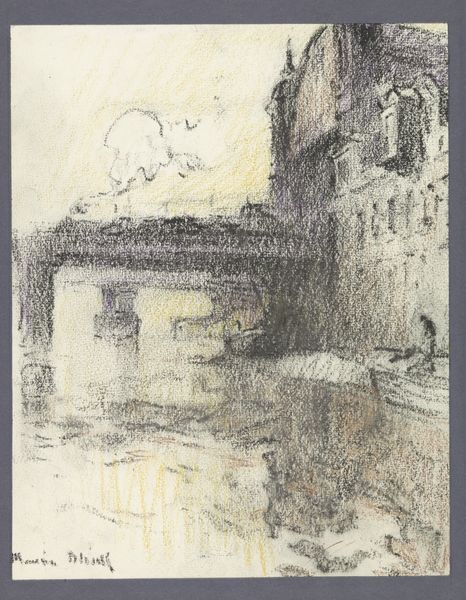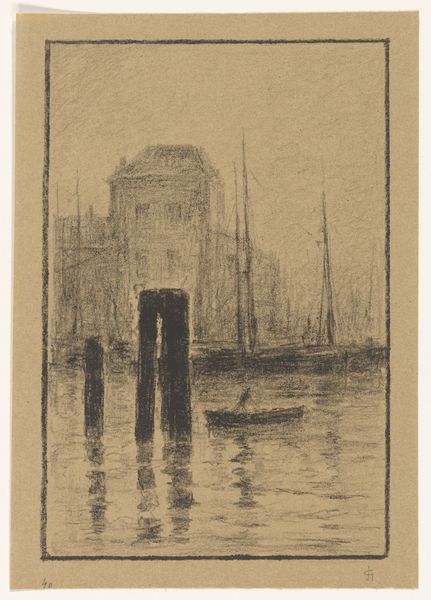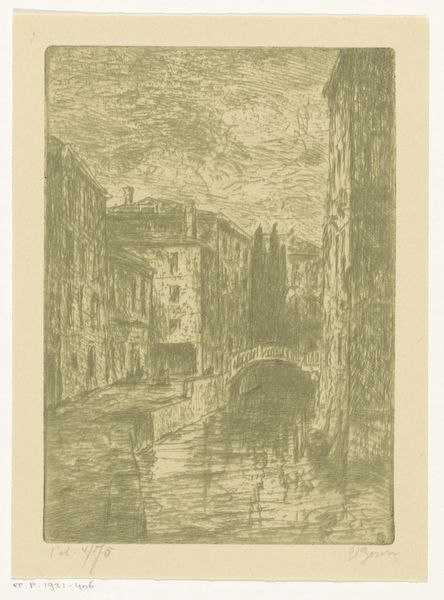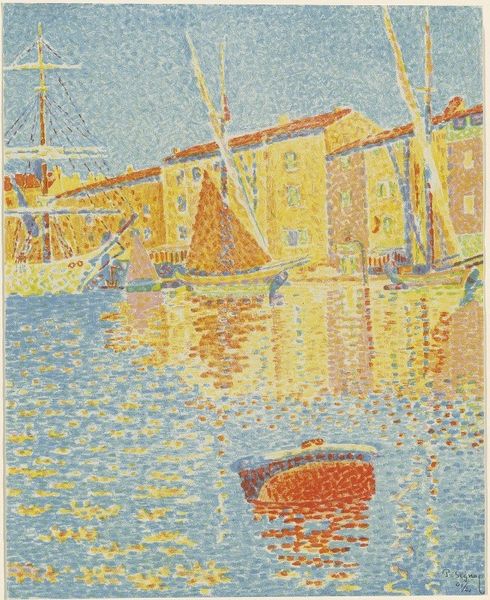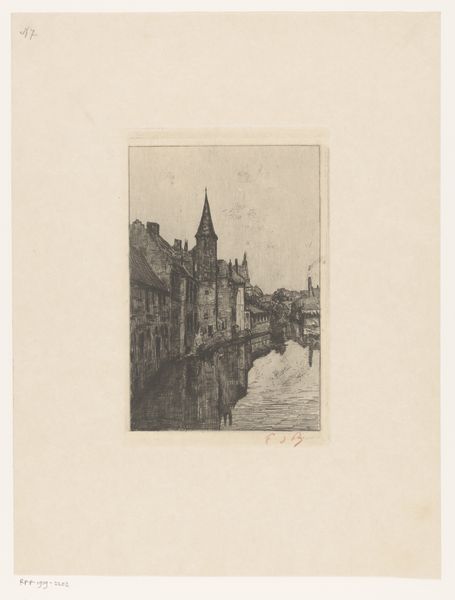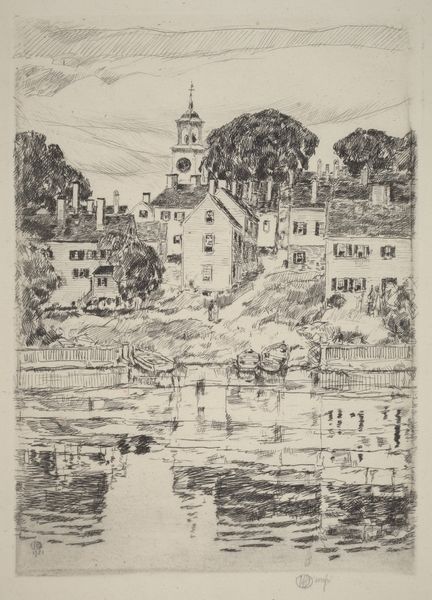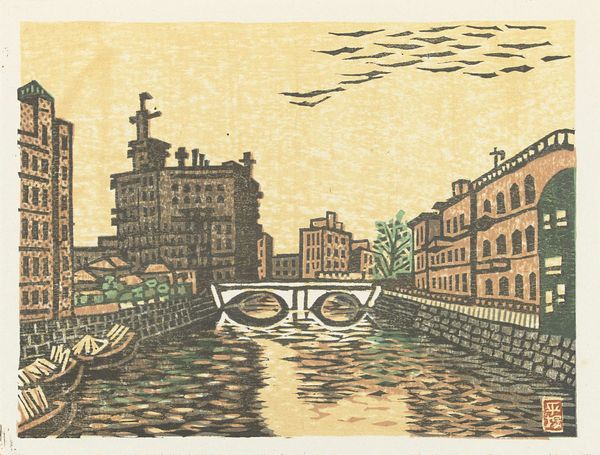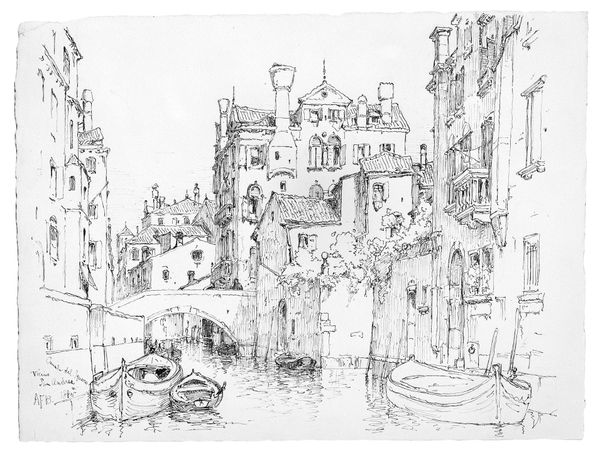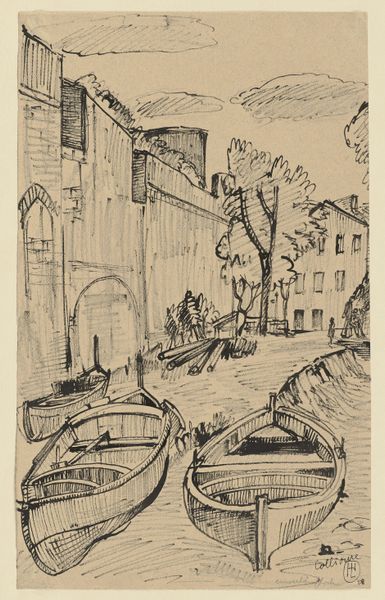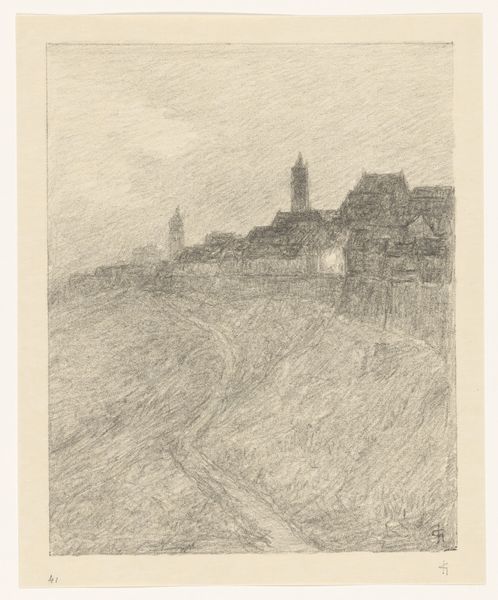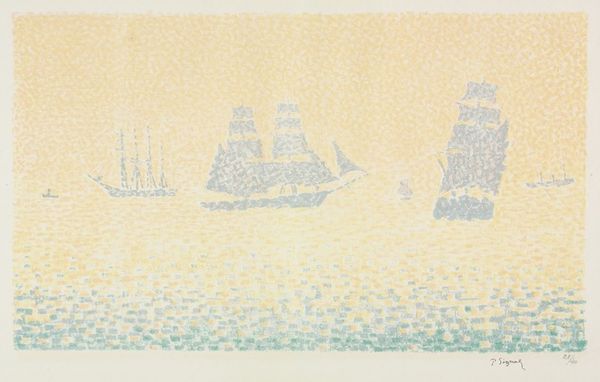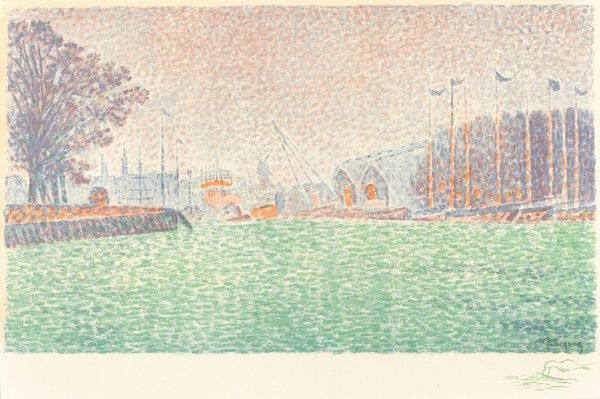
Dimensions: image: 43.5 x 33 cm (17 1/8 x 13 in.) sheet: 52.2 x 40.5 cm (20 9/16 x 15 15/16 in.)
Copyright: National Gallery of Art: CC0 1.0
Editor: This is Paul Signac's "St. Tropez: The Port" from 1897-98, created with watercolor and printmaking techniques. I’m struck by the materiality – the granular texture really catches my eye, especially the reflections on the water. What aspects of this work do you find most compelling? Curator: The visible labor is paramount here. The very *process* of Signac applying those discrete strokes of color, translating the observed light and bustling port scene onto paper, that's where the power resides. It highlights not just the scene, but the means of its production and reception, almost celebrating labor itself. Do you see the connection to contemporary printmaking’s democratization of art production? Editor: I see what you mean! It’s almost like he's drawing attention to the "making-of" instead of obscuring it. And that relates to printmaking by its availability...How did this affect the value assigned to artworks at the time? Curator: It challenges traditional, class-based distinctions of value. Originality becomes less central, because access to art, and a consciousness of how it’s made, are democratized. The pointillist technique, requiring meticulous, even repetitive gestures, mirrors the mechanized production of the industrial age while also, paradoxically, embracing craft. Editor: That's fascinating; it redefines ‘value’ from rarity to something more accessible, and highlights the labor involved. I'll never see pointillism the same way again. Curator: Precisely. Reflecting on it this way helps to rethink what we see when we see and evaluate "art."
Comments
No comments
Be the first to comment and join the conversation on the ultimate creative platform.
